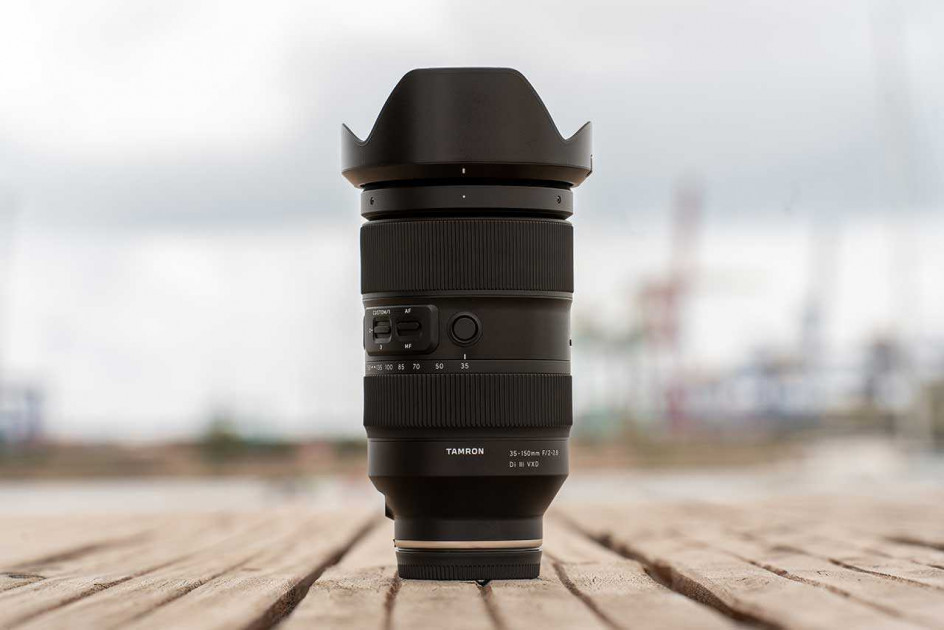The ZV-1 has proved to be a successful compact camera for Sony since its launch in 2020, offering lots of features designed specifically for vlogging and content creation. Now the ZV-E10 mirrorless model follows in its little brother’s footsteps in 2021.
So how does the new ZV-E10 differ from the ZV-1, and which of these cameras is the right one for you?
We’re bringing you this in-depth Sony ZV-E10 vs Sony ZV-1 head-to-head comparison to help you choose between them.
You can also read our detailed Sony ZV-E10 review and Sony ZV-1 review to find out exactly what we think of each one.
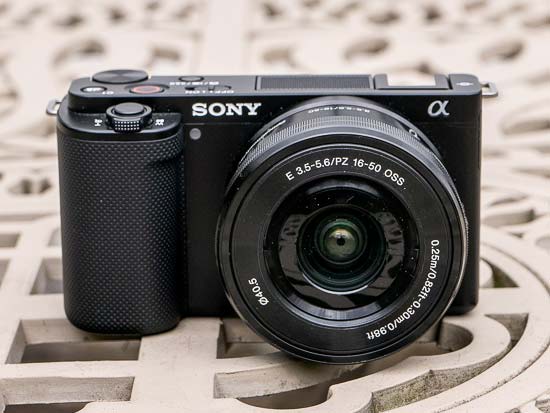
Sensor
The ZV-E10 has 24.2 megapixels and the ZV-1 has 20.1 megapixels, so the former offers slightly more resolution than the latter.
More importantly, though, the ZV-E10 features the same APS-C size sensor as all the other A6xxx series models, whereas the ZV-1 has a physically smaller 1-inch sensor.
This means that the ZVE10 is a more capable camera in low-light situations due to its larger pixel size, plus it offers greater dynamic range than the ZV1.
It’s also easier to create images with shallower depth of field and more blurred backgrounds using the ZV-E10, although that does very much depend on the maximum aperture of the lens that it is being partnered with.
The stacked Exmor RS sensor in the ZV-1 does give it some advantages over the ZV-E10, though, primarily in burst shooting and slow-motion video capabilities (more on those below).
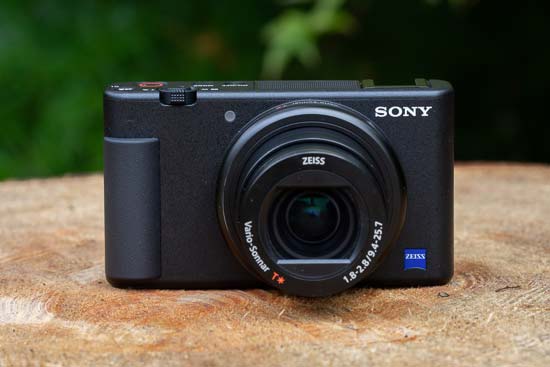
ISO Speed
The native sensitivity range of the Sony ZV-E10 is ISO 100 to ISO 32,000, which can be expanded to ISO 100 to ISO 102,400.
The ISO range of the Sony ZV-1 is ISO 100 to ISO 12,800, which cna be expanded by one stop to 25,600 using the special Multi Noise Reduction mode.
Processor
Both cameras use exactly the same powerful Bionz X image processor, which gives the ZV-E10 a claimed focusing speed of just 0.02 seconds and allows the ZV-1 to shoot at 24 images per second using the electronic shutter!

Autofocus
The Alpha ZV-E10 has a hybrid auto-focus system with 425 phase detection and 425 contrast detection AF points that cover 84% of the entire image frame.
The ZV1 also has a Hybrid AF sensor but it has fewer phase detection points – 315 in total – and the same 425 contrast detection AF points.
Both cameras offer Sony’s excellent real-time tracking system, including Eye AF for humans/animals for stills and humans for video, plus the Face Priority autoexposure (AE) function, which detects and prioritises the subject’s face and adjusts the exposure to ensure the face is depicted at an ideal brightness.
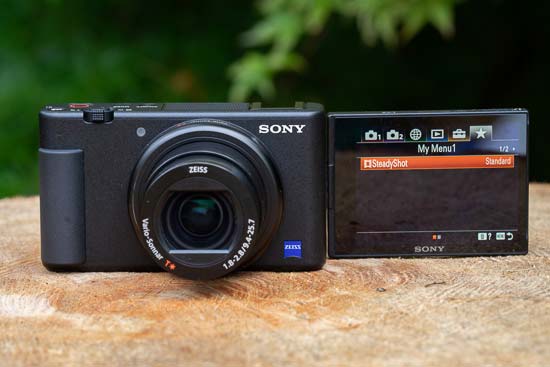
Video
On both the Sony ZV-E10 and the ZV-1, video can be recorded in 4K resolution at up to 30fps, whilst Full HD can be shot at up to 100/120fps depending on whether you are shoot PAL or NTSC format.
Both models feature Sony’s S-Log2 and S-Log3 gamma and HLG curves which enable them to record greater dynamic range. Sony’s range of Picture Profiles are also present and correct, meaning you can match the footage shot with the ZV-E10 or ZV-1 with higher-end cameras such as the A7 III.
The ZV1’s stacked sensor additonally gives it the ability to offer special HFR modes where you can shoot short video clips at 250, 500 or 1000fps, with footage then saved at 25fps for super slow motion playback – this isn’t possible on the ZV-E10.
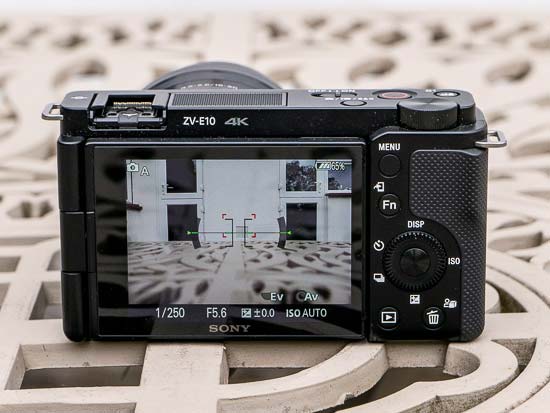
Vlogging Features
Both camera’s offer Sony’s special vlogger-friendly features – Background Defocus, Product Showcase and a Tally light.
Both have a Background Defocus button. For vloggers the aim of this button is to switch between having the background blurred or clear. In photographic terms it is switching the aperture between the largest available for the attached lens and a stopped down value.
The Product Showcase mode is an autofocus mode that alerts the camera to switch the focus from a person’s face to an object that may be held up in front of the camera. It is a popular YouTube technique for when wanting to show an item to the viewer, but on cameras with slower autofocus it can leave the focus fixed on the presenter’s face with the product out of focus, and vice versa. The Product Showcase mode solves that issue, adding another plus point for vlogging with these cameras.
A recording lamp (tally light) is also provided on the front face of the camera body for an at-a-glance indication of the current video recording status, and a red color recording alert square is displayed on the LCD screen too (both can be turned off).
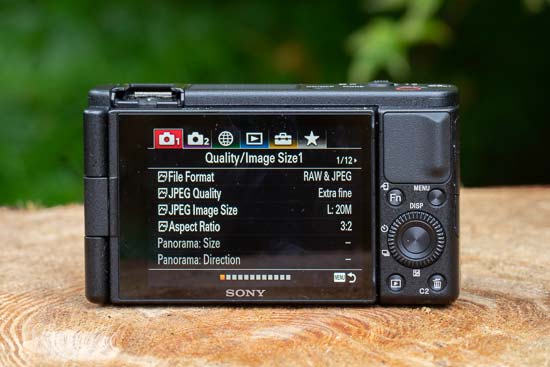
Live Streaming
Live streaming is possible directly from both cameras simply by connecting it to a computer or compatible mobile device via USB, eliminating the need for a video capture card. This allows the camera’s video and audio capabilities to be used for live social media and video conferencing. Both the UVC and UAC standards are supported for improved picture and sound quality during streaming.
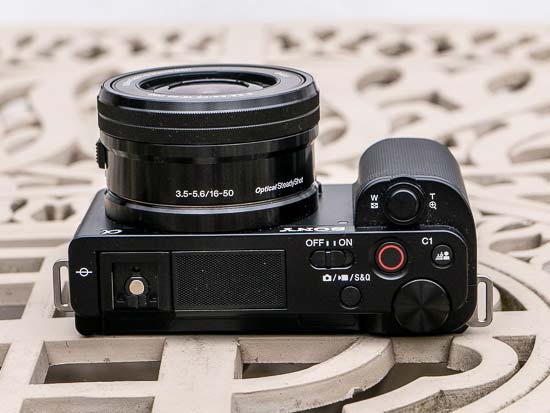
ND Filter
This is one of the key differences between the ZV-E10 and the ZV-1 – the former doesn’t have a built-in ND filter, whereas the latter does.
Why is this important? On the ZV-1, this 2-stop ND filter helps you to shoot at larger apertures on bright days, which is extremely useful when shooting video and trying to stick to the shutter speed being double the frame rate rule. On the ZV-E10 you’ll need to use actual glass filters mounted on the lens to get the same results.
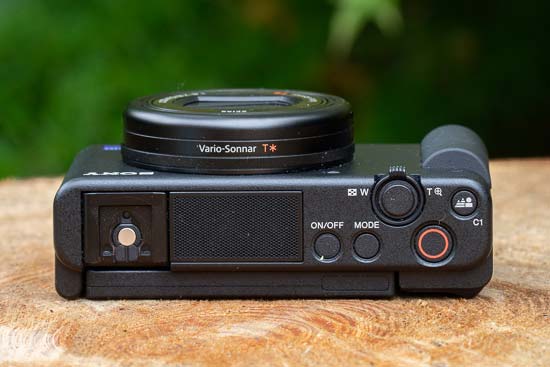
Audio
A directional 3-capsule microphone for 3-channel sound is found on top of both the ZVE10 and the ZV1. It also sports a wind reduction design with a detachable Dead Cat wind shield provided in the box. Clear voice isolation is great for recording your voice and not the background, and there’s also a dedicated Multi Interface Shoe for an external microphone and other extra accessories.
Both cameras also offer an all important 3.5mm microphone input, but only the ZV-E10 has a headphone output.
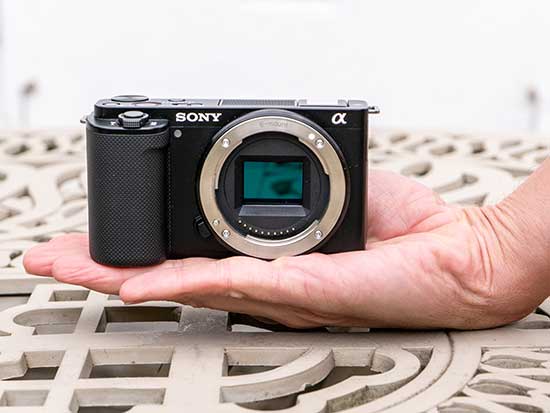
Burst Shooting
The ZV-E10 features 11fps burst shooting with continuous AF/AE tracking with the mechanical shutter and 8fps with the silent electronic shutter.
Thanks to its stacked sensor, the Sony ZV-1 has a much faster maximum burst rate of 24fps with continuous AF/AE tracking.
Lens
The ZV-1 is a compact camera with a non-removable zoom lens, the same 24-70mm F1.8-2.8 lens from the RX100 IV camera, which retracts back into the camera when not in use.
The ZV-E10 is a mirrorless camera that utilises removable, interchangeable lenses. It’s commonly offered as a kit with the small, lightweight E PZ 16-50mm F3.5-5.6 OSS lens, which makes a good starting point if you dont already have any E-mount lenses.
The ZVE10 even has a built-in zoom lever which encircles the shutter button. Although it only works with Sony’s Power Zoom lenses, it’s still quite a handy feature to have on such a video-centric camera, providing an alternative to using the zoom ring on the lens itself.
So the ZV1 offers quite a versatile 24-70mm zoom range out of the box in a small, lightweight package that fits in your pocket, whilst the ZV-E10 offers more a lot more versatility by accepting a vast array of different E-mount lenses, but is consequently larger, heavier and potentially (a lot) more expensive.
Weather Resistance
Neither the ZVE10 or the ZV1 offer any certified level of weather-sealing.
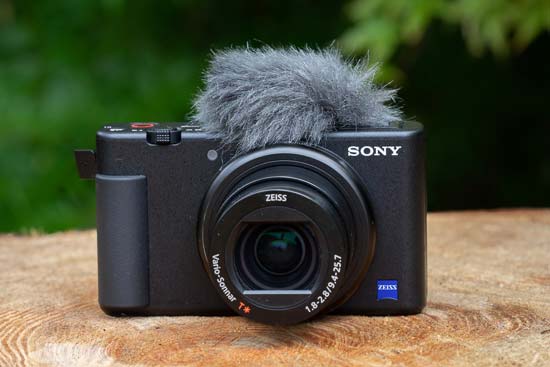
IBIS
In regards to stabilisation, there is Optical Steadyshot built-in to the ZV-1’s lens. This will give you a couple of stops extra to play with when taking still images, and it will smooth out the lightest of movements when shooting video.
On the ZV-E10, there is no built-in stabilisation. Instead, you’ll have to use a lens with its own built-in stabilization system, such as the E PZ 16-50mm F3.5-5.6 OSS that is available in a bundle with the camera body.
Both cameras offer the option to switch on Active SteadyShot in video, which is a digital form of stabilisation. This crops in to the image slightly to give the camera so digitally move the image frame around to compensate for any larger movements.
It works very well, creating very stable footage when handholding and taking out all but the heaviest of footsteps when walking. The catch is that because of the slight crop, if you are vlogging your face will appear larger when in the frame.
We would suggest only using it when walking or zooming in to show something, and when presenting to camera stick to using the Standard Steadyshot mode.
Finally, camera-shake metadata is recorded by the built-in gyro sensor that’s inside both cameras, allowing handheld footage to be smoothed out and stabilised in post-production using Sony’s Catalyst Browse / Catalyst Prepare desktop application.
Viewfinder
Neither camera has a viewfinder, so if you don’t enjoy using an LCD screen for composition, you’ll need to look elsewhere entirely.
LCD Screen
Both cameras have a 3-inch, 921,000 dot LCD screen which is hinged to the side of the camera and offers 180 degree rotation.
This means it can be flipped out to the side and rotated forwards by 180 degrees for vlogging or self-portraits (or selfies as they are now known), as well as being able to fold the screen in to the camera body to offer protection when you just want to carry the camera loose in a bag or pocket.
Memory Cards
The ZV-1 and ZV-E10 both have a single memory card slot which supports UHS-I type SD cards.
Battery Life
The Sony ZV-1 uses the NP-BX1 battery, with battery life quoted as being between 45-75mins of video or 260 stills.
The ZV-E10 uses the larger NP-FW50 battery which is rated for about 80-125mins of video or 440 stills.
Price
In the UK the Sony ZV-1 is priced at £700 and in the US it costs $800.
The Sony ZV-E10 is priced at £680 / $700 body-only. It’s also offered as a kit with the E PZ 16-50mm F3.5-5.6 OSS lens, priced at £770 / $800.
Conclusion
The Sony ZV-E10 and ZV-1 are both excellent vlogging options at around the same price point, but obviously differ in their approach – the former is larger but has a bigger sensor and a potentially more versatile interchangeable lens system, whereas the latter is more compact but has a smaller sensor and less versatile fixed lens.
So what do you think? Would you choose the Sony ZV-E10 or the Sony ZV-1, and why? Leave a comment below!

